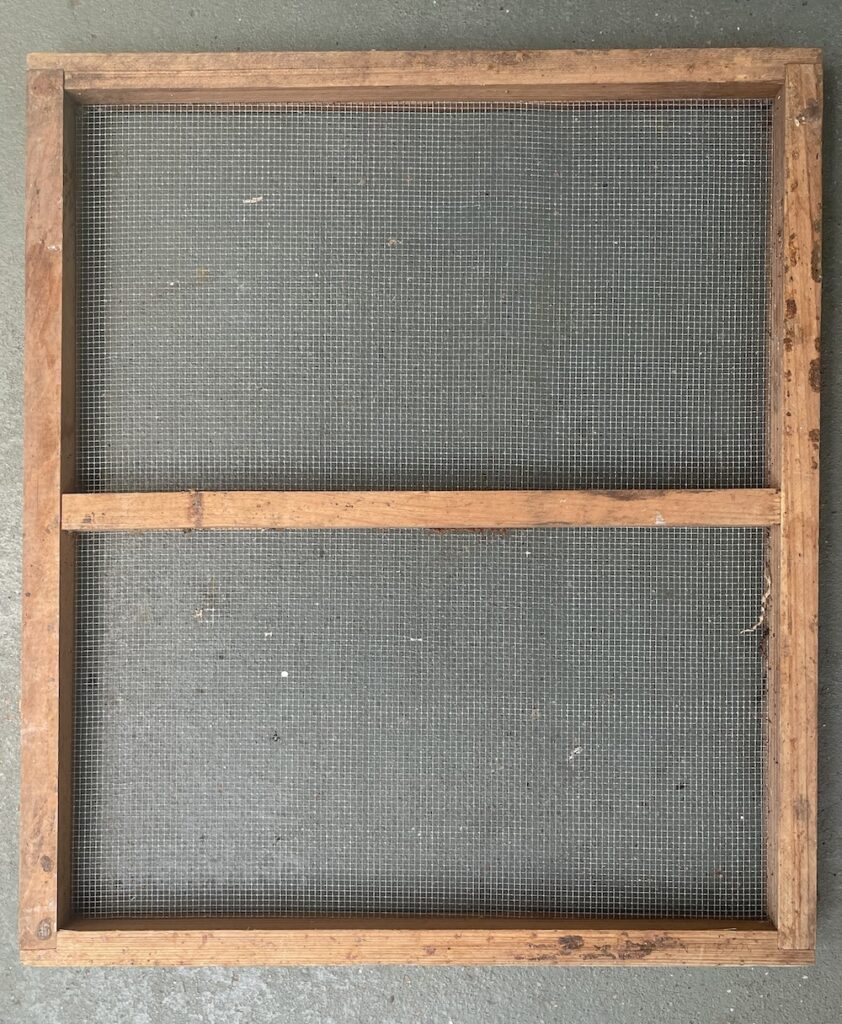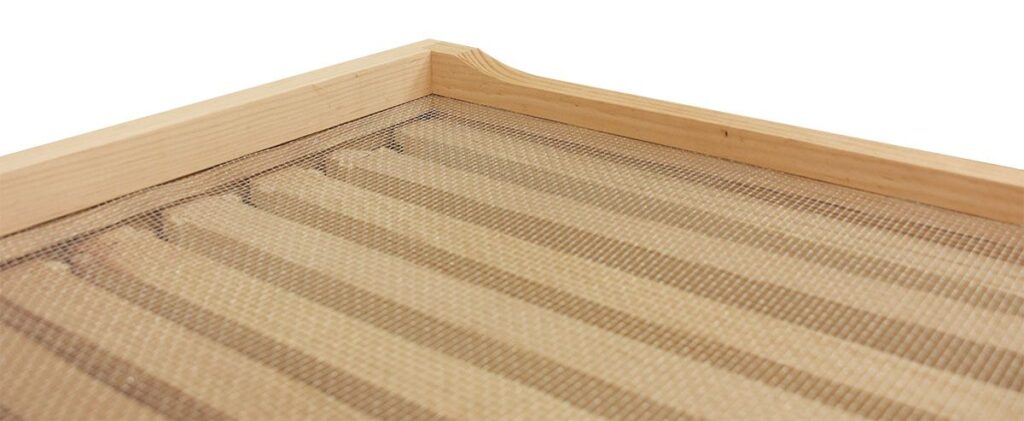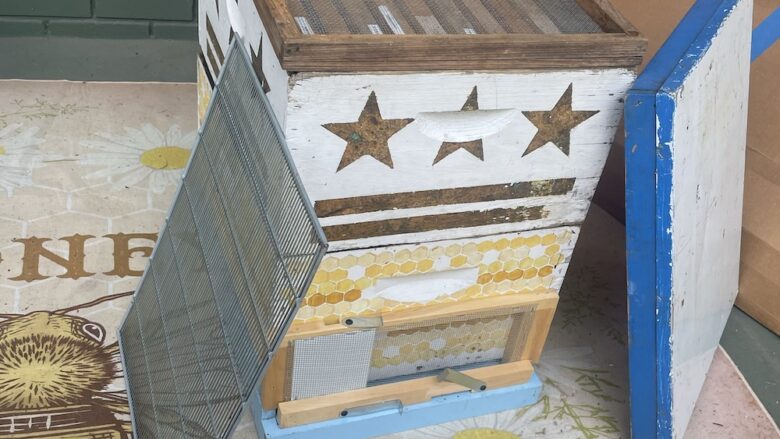by Toni Burnham

It's summer in the city now, and that means some gear that has been stacked on the shelf is going back in the field. For me, that means every hive will be sporting a moving-style robbing screen, and I will swap in as many ventilated inner covers as I can.
In beekeeping, YMMV ("your mileage may vary") is not just polite conversation, but the rules of the road, so any tips we give should be considered personal sharing rather than a strong prescription!
Moving Style Robbing Screen Pluses
You have probably read that cities (like where I keep bees) are increasingly crowded apicultural clusters, which means that robbing is not just a possibility but a probability. In DC, that can get started as early as late June (when we have early Springs) and last into October. So recommending a robbing screen might make you wonder why you are bothering to read something so obvious!

There is a reason why I am recommending a specific robbing/MOVING style screen, like the one on your right. This screen gives a more complete closure (if you remember to shut any inner cover entrance) with almost no effort, as soon as the behavior begins. Also, that lovely solid barrier on the left side (which kinda blocks odors of hive resources on that side) allows you to open up a tiny, safer entrance sooner: an entrance that the Home Bees can more easily guard... and the robbers are less likely to detect.
The average home made robbing screen is OK at that job: it makes the colony less vulnerable to attack and easier to guard, and we all know that the secret to addressing robbing is not letting it get started in the first place. But that is all it does.
In DC, we also move a lot of hives in the summer (I didn't say we were geniuses), and the secret to moving hives is:
- Completely close/secure all entrances and exits.
- Check that you really did secure them (remember that inner cover?)
- Get someone competent to check that you secured all entrances/exits, as well.
- Strap that stuff together. Staples are good, too.
- Make sure there is no way it moves around in your vehicle.
A closed up hive that is well strapped together and secured in a truck bed or (yes) mini van cargo area moves like oiled silk. One leak and we have what one can usually call feces on the ventilator. And that is harder on the bees, too. Moving/robbing screens fit tight, close easily, are securable with a bit of everyone's friend (duct tape), and open with the same facility.
At locations where special events involving the public or large crowds happen from time to time, being able to close that moving screen beforehand can help everyone out. Once at the Fairmont Hotel, workers who were required to place scaffolding down the side of the building needed us to close up the rooftop colonies there while they worked. They became comfortable enough to open them up again by themselves when they left each day!
Finally, we have insect spraying in the city, even if we tell our neighbors all about the evils of Mosquito Squad-like applications. If you can get a heads up, you can close them in securely.

Why I Love Ventilated Inner Covers
Ventilated inner covers are also ACES for moves. When placed correctly, there is no opening for the bees to use as an exit (or to get in), and in hotter weather your bees are in reduced danger of overheating.
And all the stuff I mentioned above about closing bees up for events or pesticide sprays or construction also applies to screened inner covers. For prolonged periods, it can save bees from death.
Many of us also have colonies in hot rooftop apiaries, and the extra ventilation may reduce labor for summer workers, or just allow more of them to stay inside working.
For hives that still need heavy feeding, it is also possible to leave screened inner covers in place and use a hive top feeder below: you can just lift the telescoping cover and pour in without opening. I hesitate to do this unless all or most of the colonies in an apiary are similarly exposed, however.

The Grudging Admission: Queen Excluders
I am not getting any younger, and August is not getting any cooler, so I have begun to relent on my resistance to using queen excluders. Placing one under the supers AFTER harvest may seem loony, but it helps me to go directly to the brood nest to find out what is really going on. This saves my time and back (especially on large colonies) but also reduces the period when hive resources are exposed to robbing.
I only use metal queen excluders without wooden frames, so it is truly important that I remember to look for them once October (or whenever robbing ebbs) rolls around. The frames would definitely help me spot them while casually scanning the apiary, so you will get no grief from me if that is your choice!
Your tips?
Your tips (and, yes, incredulous feedback) would be welcome! Please email beeline@mdbeekeepers.org to share, and we would also love to see other's ideas!
[Return to June 2024 BeeLine newsletter]

